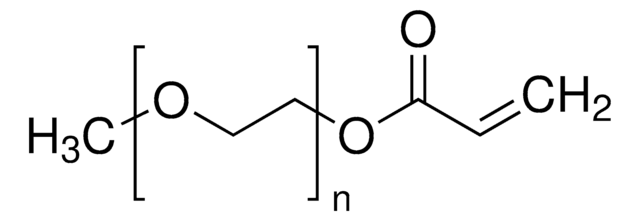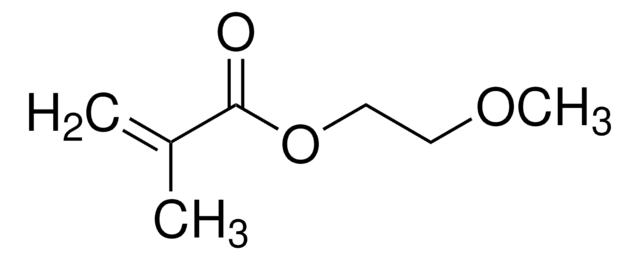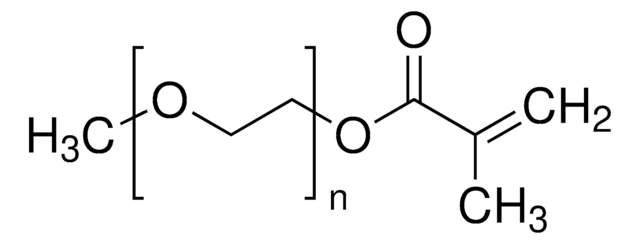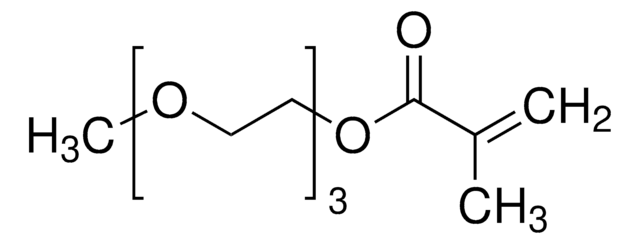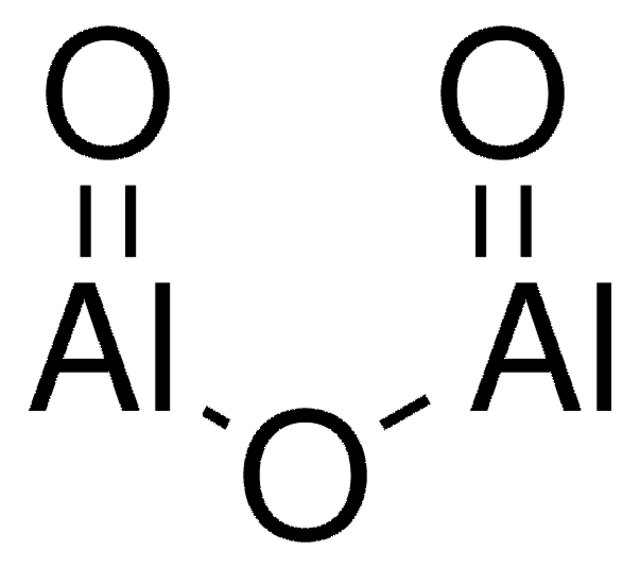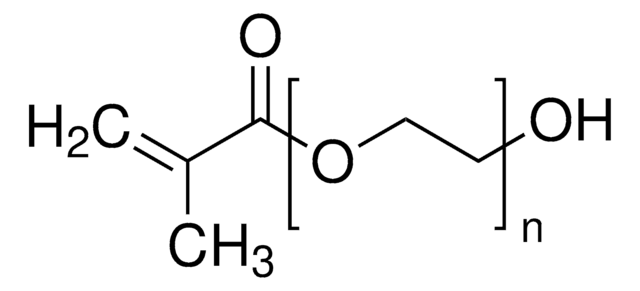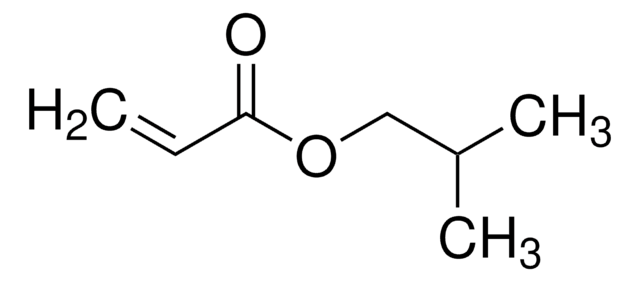408913
Ethylene glycol methyl ether acrylate
contains 50-100 ppm MEHQ as inhibitor, 98%
Sinónimos:
2-Methoxyethyl acrylate
About This Item
Productos recomendados
Nivel de calidad
Ensayo
98%
Formulario
liquid
contiene
50-100 ppm MEHQ as inhibitor
índice de refracción
n20/D 1.427 (lit.)
bp
56 °C/12 mmHg (lit.)
densidad
1.012 g/mL at 25 °C (lit.)
cadena SMILES
COCCOC(=O)C=C
InChI
1S/C6H10O3/c1-3-6(7)9-5-4-8-2/h3H,1,4-5H2,2H3
Clave InChI
HFCUBKYHMMPGBY-UHFFFAOYSA-N
Categorías relacionadas
Descripción general
Palabra de señalización
Danger
Frases de peligro
Consejos de prudencia
Clasificaciones de peligro
Acute Tox. 3 Dermal - Acute Tox. 3 Inhalation - Acute Tox. 4 Oral - Aquatic Chronic 3 - Eye Dam. 1 - Flam. Liq. 3 - Muta. 2 - Repr. 1B - Skin Corr. 1C - Skin Sens. 1 - STOT RE 2
Riesgos supl.
Código de clase de almacenamiento
3 - Flammable liquids
Clase de riesgo para el agua (WGK)
WGK 3
Punto de inflamabilidad (°F)
140.0 °F
Punto de inflamabilidad (°C)
60 °C
Equipo de protección personal
Eyeshields, Faceshields, Gloves, type ABEK (EN14387) respirator filter
Elija entre una de las versiones más recientes:
¿Ya tiene este producto?
Encuentre la documentación para los productos que ha comprado recientemente en la Biblioteca de documentos.
Los clientes también vieron
Global Trade Item Number
| Número de referencia del producto (SKU) | GTIN |
|---|---|
| 408913-1L | 4061831988765 |
| 408913-250ML | 4061831988772 |
Nuestro equipo de científicos tiene experiencia en todas las áreas de investigación: Ciencias de la vida, Ciencia de los materiales, Síntesis química, Cromatografía, Analítica y muchas otras.
Póngase en contacto con el Servicio técnico